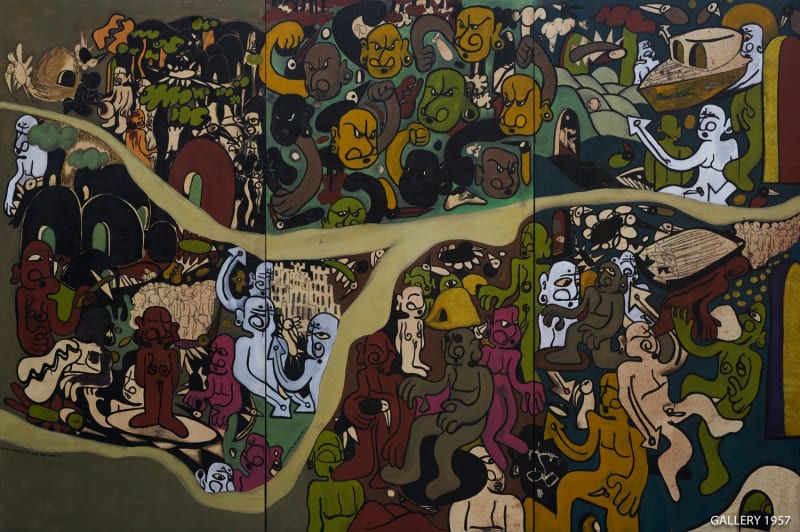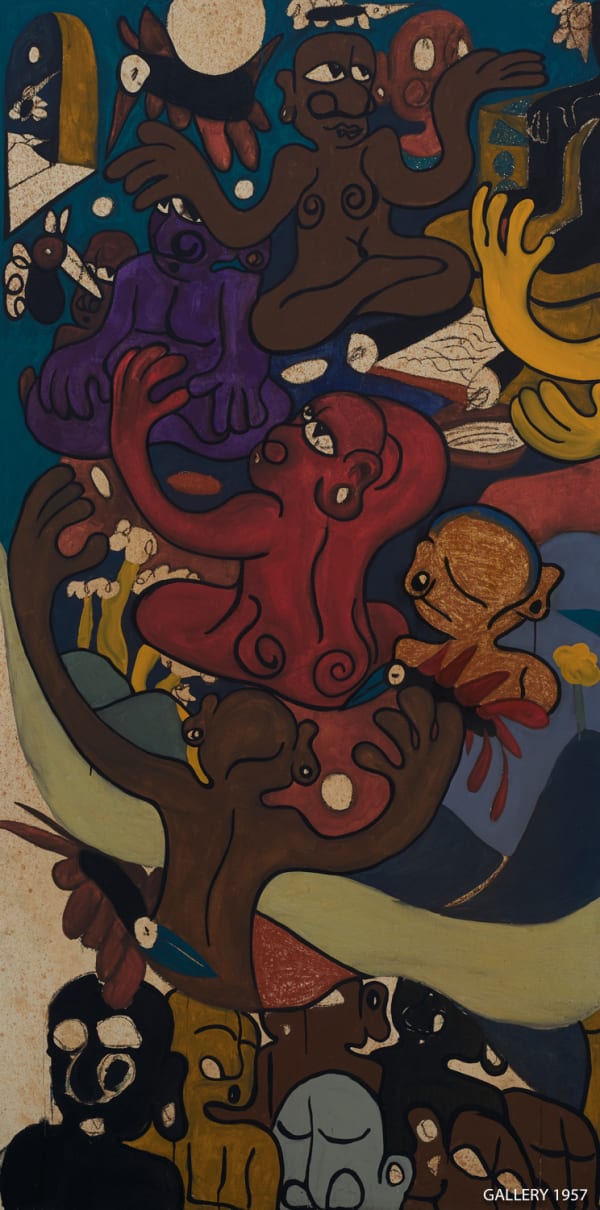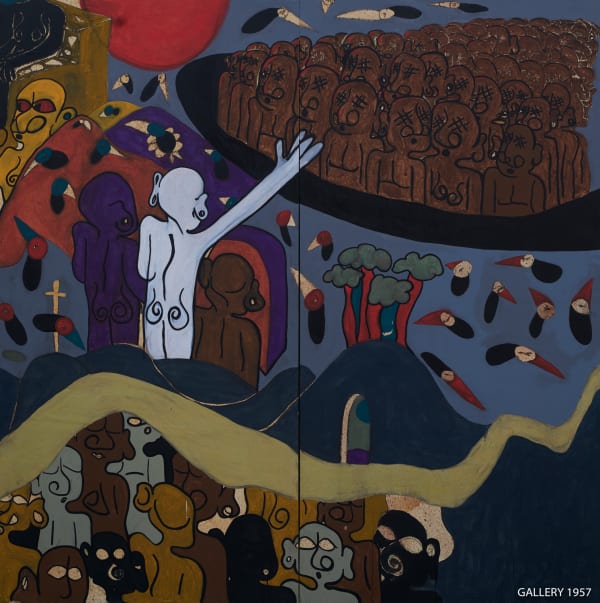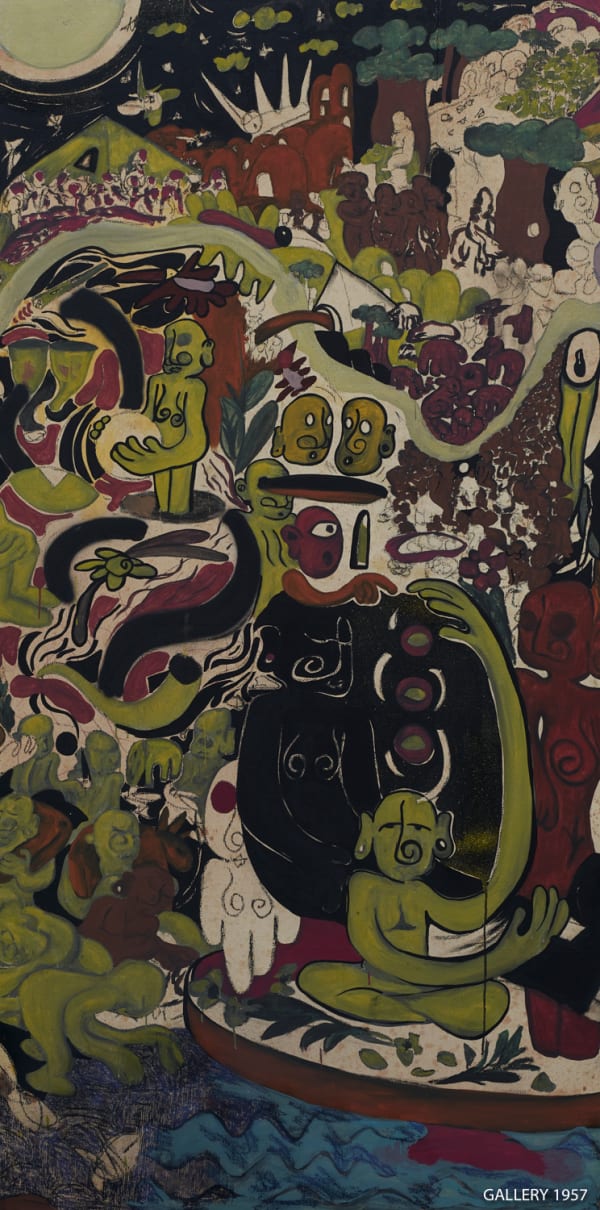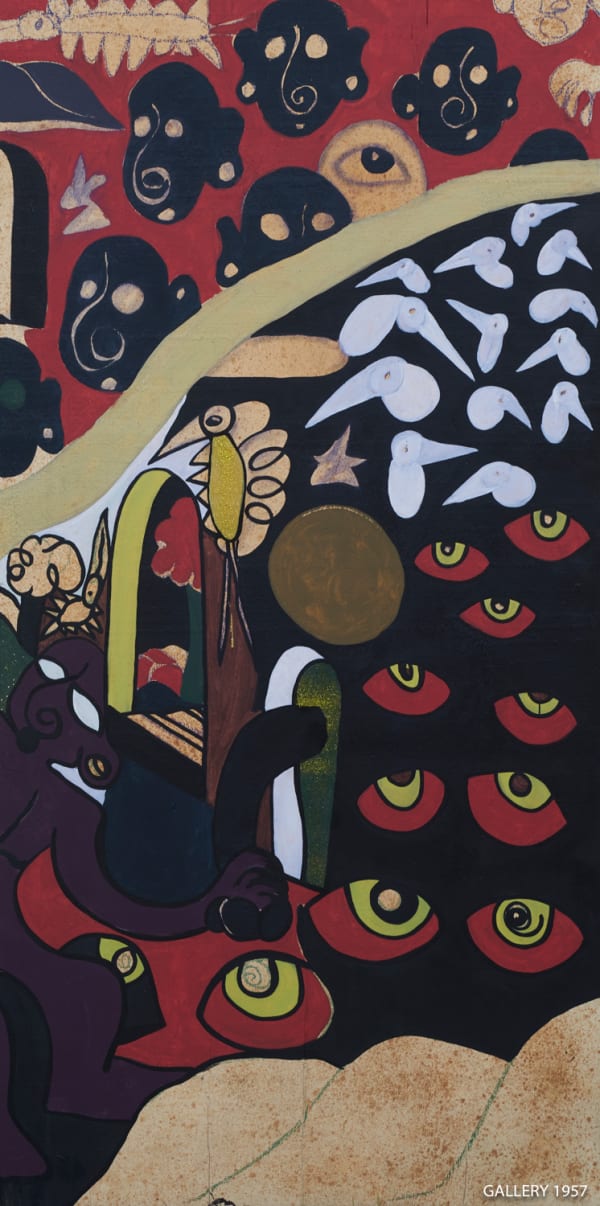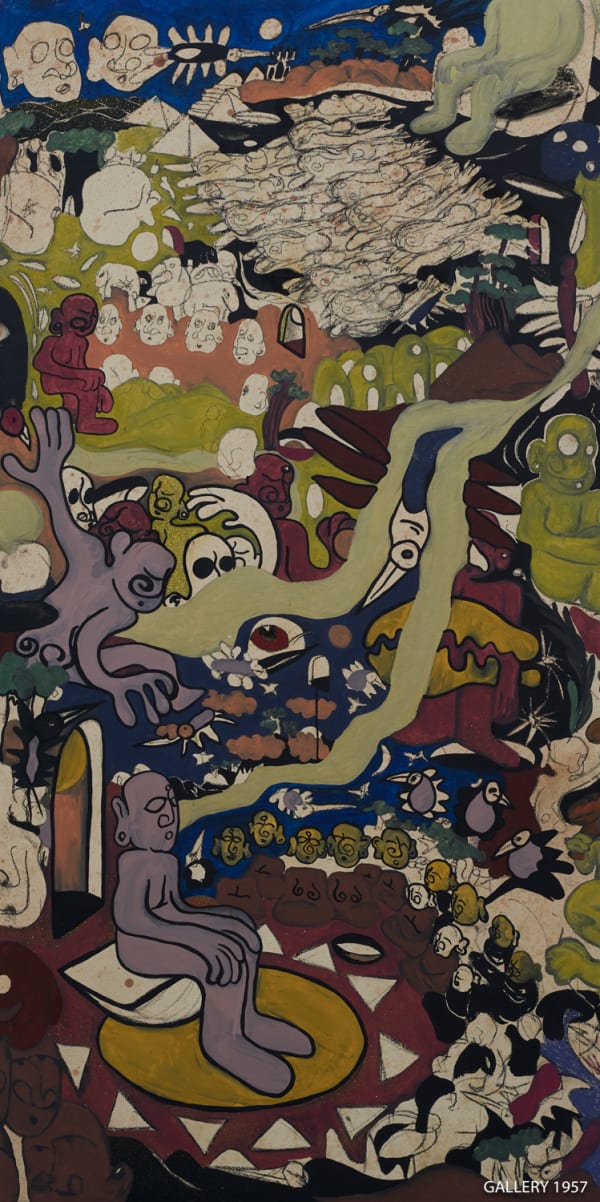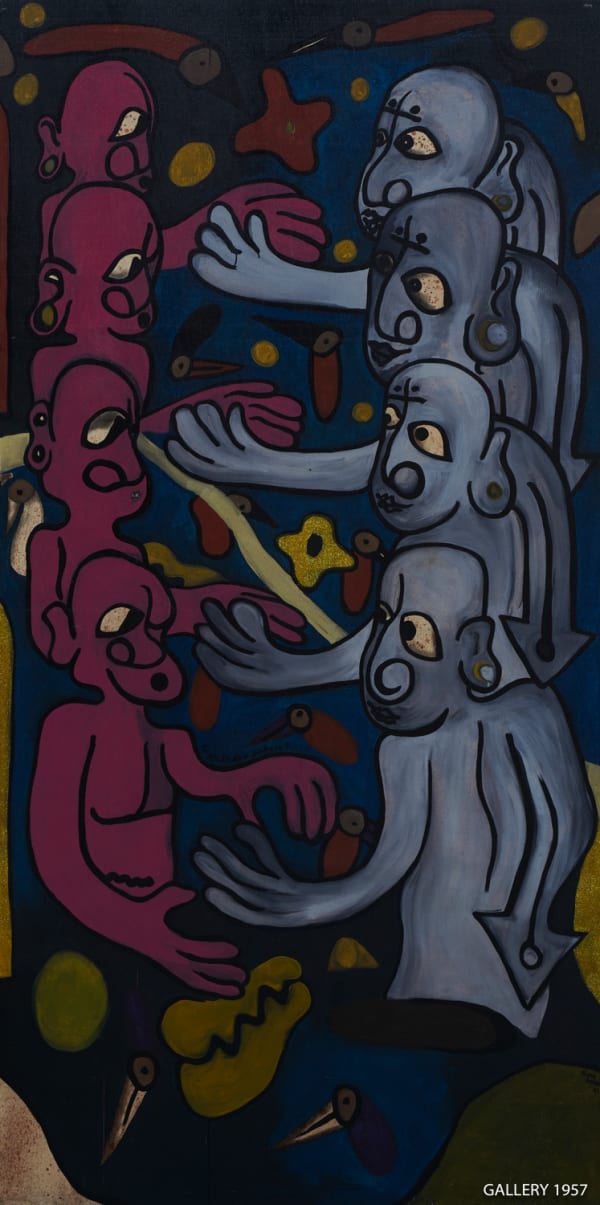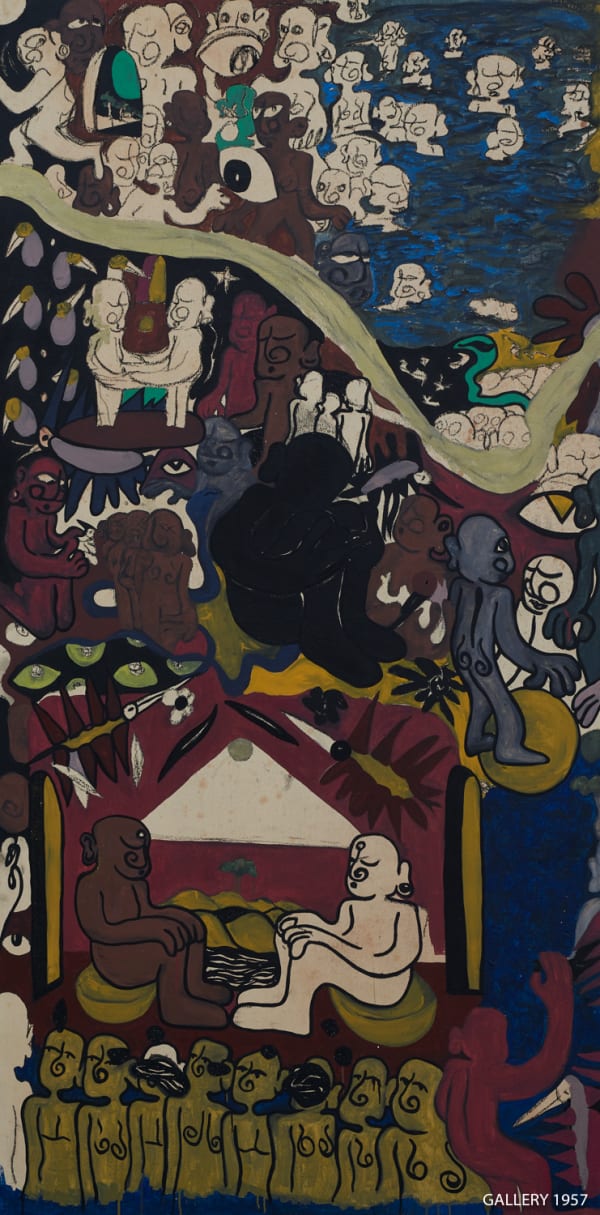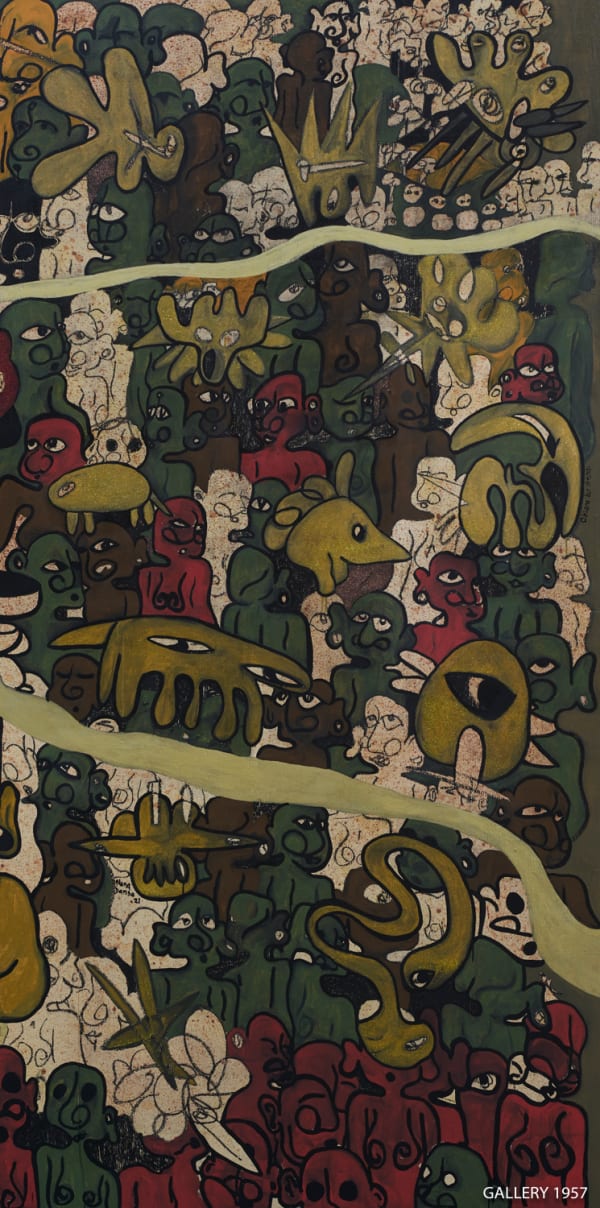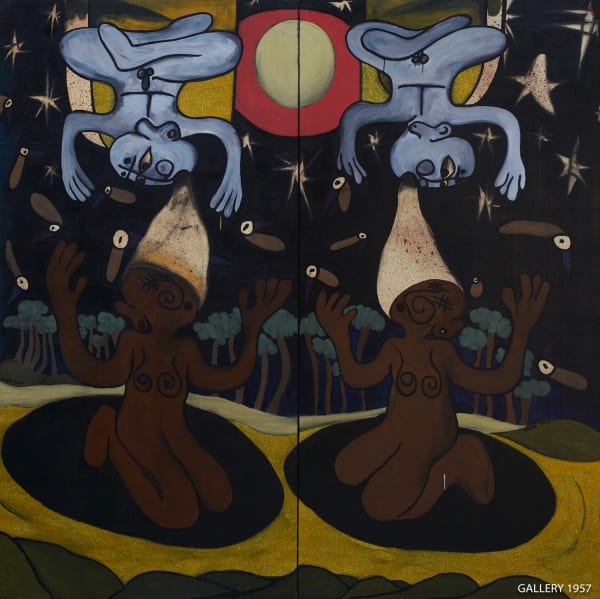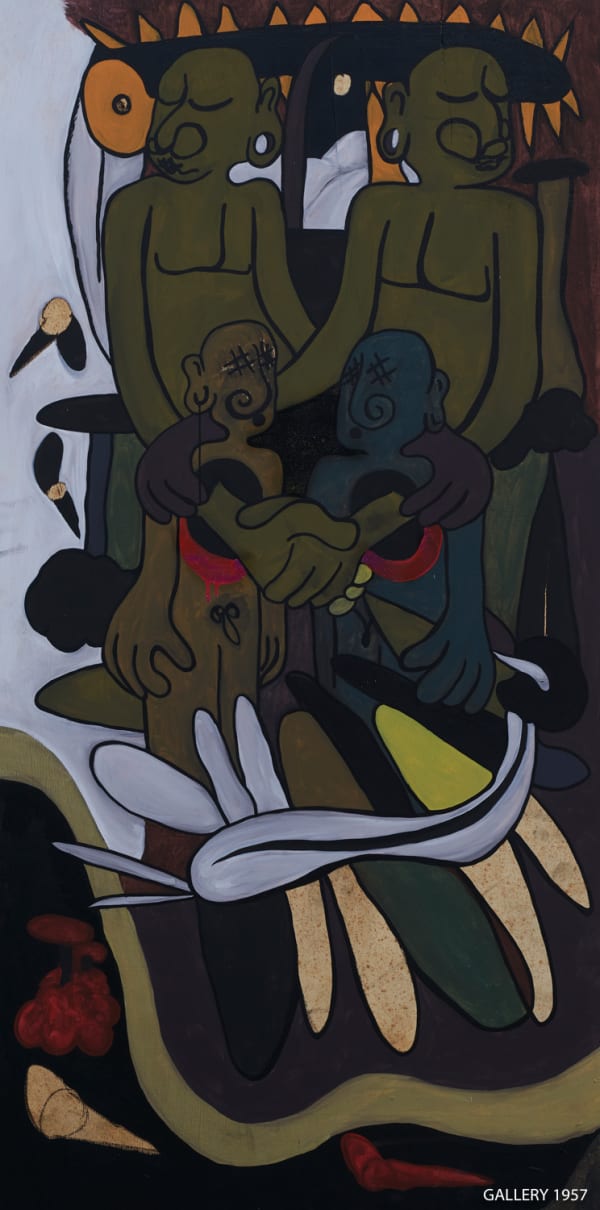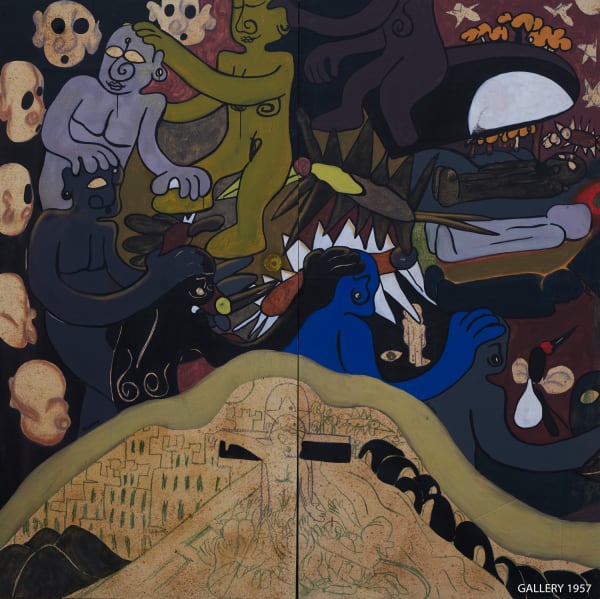Artsoul Kojo-History of Ghana: Accra, Gallery I
The African does not travel through time: time travels through the African, much like a river in which we each stand facing downstream. The water immediately surrounding us is the present, joining history as it flows past. This—according to the philosopher John Mbiti—is the African concept of time: "a long past, a present and virtually no future." This does not mean we have no future, but tells us that the future floats somewhere behind us. We cannot speed it up. There is no need to turn around and wade into it. It is inevitable and will flow in our direction. We can only focus on what has already happened and (more importantly) what is taking place today; the latter being the aspect of time over which we wield the most control.
Popularly known as Artsoul Kojo, Nana Danso Awuah-Asante is a self-taught Ghanaian contemporary artist whose work continues traditions of storytelling that evoke African visual symbolism, ultimately exploring how the human psyche processes the stranger aspects of our everyday lives, creating infinite new ways of looking at the world.
Showing from February 2021 at Gallery 1957, his installation The History of Ghana presents Ghana’s story from the perspective of what is yet to be; futures in which our present is the past and our decisions and actions today have either healed our collective self or doomed us all to repeat the past until we perfect it. Through an endless cast of characters and motifs, Artsoul Kojo explores how our collective future is dependent on the thoughts and actions of free individuals today who can either harness that responsibility or squander it.
There is both a deep sadness and an anger that one experiences when one is cheated of one's history; history for which blood was shed, lives were lost and victories hard won. While researching this work, Artsoul Kojo was reminded that the history that he and his peers are taught is riddled with gaps. What little is left is tethered around colonial knowledge of far less relevance to African identity than the ancient knowledge it replaced. What remains of such ancient knowledge - around everything from wealth and migration to how we communicated and connected to the people, the planet, and the stars - has been stripped of context and left bare.
The History of Ghana is an attempt to find information and share it from a place deep within. Artsoul Kojo takes his inspiration from the elders' use of symbols as vessels to carry complex history and transmit it through time to our descendants. The human imagination has a well-documented ability to latch onto symbols as means of manipulating the world. Artsoul Kojo infuses The History of Ghana with shapes and forms inspired as much by the familiar as he is by things borrowed from the unknown. It takes gifted storytellers to stretch our collective imagination, weaving new realities and alternative narratives out of their observations of society. Artsoul Kojo honours African storytellers with ‘theeyewitness’: a character that pervades much of his art; watching on with wonder, bearing witness and quietly questioning society in surreal landscapes inspired by national history.
Walking through a multidimensional mural, the audience will be surrounded by dreamlike paintings depicting pasts that that may look alien but feel familiar: visions of what it may yet mean to be Ghanaian when the Ghana we want is yet to drift through time towards us. Using the tapestry of time itself, ArtSoul Kojo invites us to commune not only with the ancestors but also with our descendants asking ourselves who we are, who we have been and who we may yet be.
-
 Artsoul Kojo, Adesheɛ asaase (Royal Land), 2021
Artsoul Kojo, Adesheɛ asaase (Royal Land), 2021 -
 Artsoul Kojo, Agya rekɔ no ogya me adeɛ bi? (When my father was leaving, did he leave something for me?), 2021
Artsoul Kojo, Agya rekɔ no ogya me adeɛ bi? (When my father was leaving, did he leave something for me?), 2021 -
 Artsoul Kojo, Ahenfie (Palace), 2021
Artsoul Kojo, Ahenfie (Palace), 2021 -
 Artsoul Kojo, Ahenie (Reign), 2021
Artsoul Kojo, Ahenie (Reign), 2021 -
 Artsoul Kojo, Asaase kronkron na mode adane ɛdwa no? (Is that a holy land you have turned into a market?), 2021
Artsoul Kojo, Asaase kronkron na mode adane ɛdwa no? (Is that a holy land you have turned into a market?), 2021 -
 Artsoul Kojo, Asaase yɛduru sene ɛpo (The earth is heavier than the sea), 2021
Artsoul Kojo, Asaase yɛduru sene ɛpo (The earth is heavier than the sea), 2021 -
 Artsoul Kojo, Fa ade shɛnshɛn Begye ade fitaa (Bring something shiny in exchange for something white), 2021
Artsoul Kojo, Fa ade shɛnshɛn Begye ade fitaa (Bring something shiny in exchange for something white), 2021 -
 Artsoul Kojo, hu m'ani so mame nti na atwe mmiemu nam (Blow my eyes, that's why two antelopes walk together), 2021
Artsoul Kojo, hu m'ani so mame nti na atwe mmiemu nam (Blow my eyes, that's why two antelopes walk together), 2021 -
 Artsoul Kojo, nimdie soronko (special knowledge), 2021
Artsoul Kojo, nimdie soronko (special knowledge), 2021 -
 Artsoul Kojo, nnɛ mmerɛm yɛ daso kyerɛ akwadaa nyame? (In these times do we still teach a child what God is?), 2021
Artsoul Kojo, nnɛ mmerɛm yɛ daso kyerɛ akwadaa nyame? (In these times do we still teach a child what God is?), 2021 -
 Artsoul Kojo, Nsa kɔ na se nsa amba ee (what if hand goes and it doesn't come) , 2021
Artsoul Kojo, Nsa kɔ na se nsa amba ee (what if hand goes and it doesn't come) , 2021 -
 Artsoul Kojo, Ntɔkwa hunu kwa (Unnecessary fight), 2021
Artsoul Kojo, Ntɔkwa hunu kwa (Unnecessary fight), 2021 -
 Artsoul Kojo, nyansa nni baakofoɔ tri mu (wisdom is not in one person's head), 2021
Artsoul Kojo, nyansa nni baakofoɔ tri mu (wisdom is not in one person's head), 2021 -
 Artsoul Kojo, Obiara bɔ ntɔn (Everyone has a clan), 2021
Artsoul Kojo, Obiara bɔ ntɔn (Everyone has a clan), 2021 -
 Artsoul Kojo, Obra yɛ akwantuo (Life is a journey), 2021
Artsoul Kojo, Obra yɛ akwantuo (Life is a journey), 2021 -
 Artsoul Kojo, Onibie nyame (Poor man's god | Eye opening God), 2021
Artsoul Kojo, Onibie nyame (Poor man's god | Eye opening God), 2021 -
 Artsoul Kojo, Sansankroma (The Hawk), 2021
Artsoul Kojo, Sansankroma (The Hawk), 2021 -
 Artsoul Kojo, Sunkwa (Cry for Life), 2021
Artsoul Kojo, Sunkwa (Cry for Life), 2021 -
 Artsoul Kojo, Sɛ wo suro sonsono aa, ɛdane ɔwɔ (If you are afraid of worms, they turn into snakes), 2021
Artsoul Kojo, Sɛ wo suro sonsono aa, ɛdane ɔwɔ (If you are afraid of worms, they turn into snakes), 2021 -
 Artsoul Kojo, Yadesheɛ na mo adane wɔn nkoa no? (Are these our royals turned into slaves?), 2021
Artsoul Kojo, Yadesheɛ na mo adane wɔn nkoa no? (Are these our royals turned into slaves?), 2021 -
 Artsoul Kojo, Yɛn dwane ɔfre no (We don't run from the calling), 2021
Artsoul Kojo, Yɛn dwane ɔfre no (We don't run from the calling), 2021

